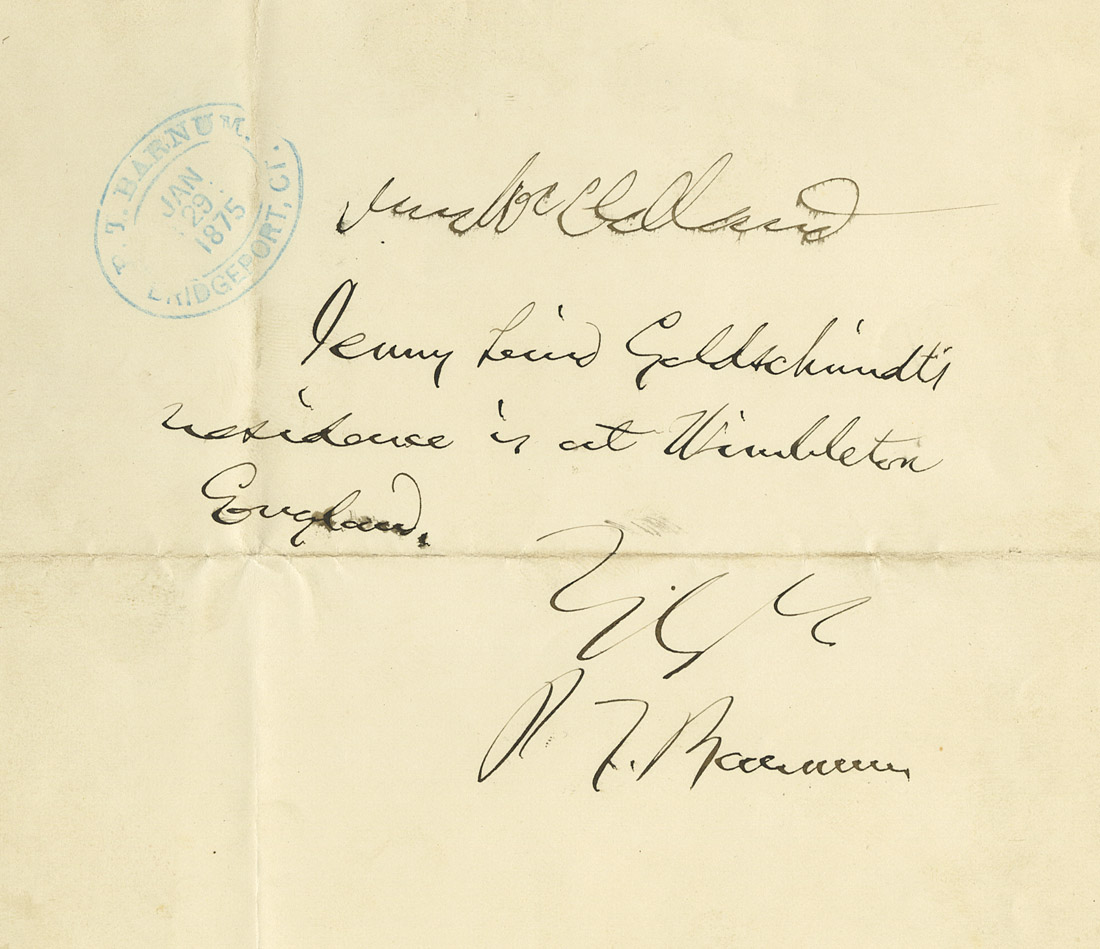P.T. Barnum Mentions Jenny Lind, Whom He Made Into the First Singing Star


Showman Phineas T. Barnum had a circus background and operated an extremely popular museum in New York City, where he was known for exhibiting the diminutive General Tom Thumb. He heard about the singer thrilling Europe, Jenny Lind – “The Swedish Nightingale ”- saw an opportunity, and sent a representative to make...
Showman Phineas T. Barnum had a circus background and operated an extremely popular museum in New York City, where he was known for exhibiting the diminutive General Tom Thumb. He heard about the singer thrilling Europe, Jenny Lind – “The Swedish Nightingale ”- saw an opportunity, and sent a representative to make an offer to bring her to America. Lind drove a hard bargain with Barnum, demanding that he deposit the equivalent of nearly $200,000 in a London bank as an advance payment before she would come to America. He did so, and when she sailed into New York Harbor in 1850 the city went crazy. A massive crowd of more than 30,000 New Yorkers greeted her ship. Barnum kept up a barrage of press releases, handouts, processions, and ballyhoo of all sorts. Amidst a massive publicity campaign, she traveled all around the country, giving 93 concerts for Barnum and making them both a fortune.
This made Barnum the first person to promote a singer or musician as you would an attraction, the first to invent the modern concept of stardom for artists, the first to “make” an audience, and thus the world’s first impresario.
Autograph Note Signed, Bridgeport, Conn., January 29, 1875, telling collector Eugene McClelland “Jenny Lind Goldschmidt’s residence is at Wimbledon, England”.

Frame, Display, Preserve
Each frame is custom constructed, using only proper museum archival materials. This includes:The finest frames, tailored to match the document you have chosen. These can period style, antiqued, gilded, wood, etc. Fabric mats, including silk and satin, as well as museum mat board with hand painted bevels. Attachment of the document to the matting to ensure its protection. This "hinging" is done according to archival standards. Protective "glass," or Tru Vue Optium Acrylic glazing, which is shatter resistant, 99% UV protective, and anti-reflective. You benefit from our decades of experience in designing and creating beautiful, compelling, and protective framed historical documents.
Learn more about our Framing Services








































































































